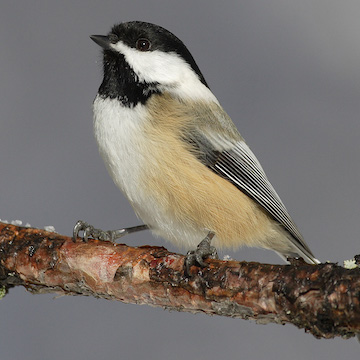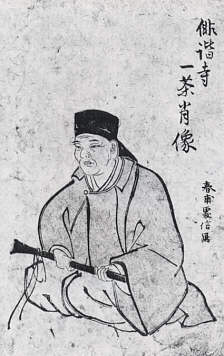Following World War II, liberal Catholic thinkers embarked on a grand intellectual project of convergence — or at least dialogue — with religious thought East and West. This effort was circumscribed by more conventional Catholic authorities as ecumenism, wherein the effort of convergence was restricted to other Christian sects, with the tone of accommodating other sects sufficiently to reabsorb them. The more ambitious style was reflected in a 1963 book titled Matter & Spirit: Their Convergence in Eastern Religions, Marx and Teilhard de Chardin. Within the ambitiously-titled project, religion and science could be reconciled, for wasn’t Teilhard a scientist and anthropologist to boot? And political reconciliation with a new post-war democratic impetus would reconsider socialism.
A convergence project of an intellect sort only was undertaken by Aldous Huxley in his book The Perennial Philosophy, first published in 1945. Huxley presented passages from classics of world religion with a minimum of his own commentary. He gathered passages under various headings: God, Charity, Good and Evil, Suffering, Faith, Grace, Will, and the like. The premise was not convergence but appreciation, the presentation of cultural traditions, similar and yet the reader senses, not reconcilable.
But the project was too ambitious, too abstract. As Harvey Cox observed in his 1955 classic The Secular City, the shadows of ideology and material progress, specifically in the United States in this period, was promoting secularism wherein Christianity, long associated with Western tradition, became pragmatic, increasingly diluted by material life, and a passive expression of convenience and conformity. The American masses had little appetite for universalism when exceptionalism was sufficient to propelled society’s values.
Another factor at this time in Catholic circles is the absence of critical studies, either textual or historical. The era of udolf Bultmann’s demythologizing had not yet taken hold, let alone the later quest for the historical Jesus. The voaculary of theology was still reflective of scholasticism and medieval mustiness.
One outstanding Catholic commentator on the times was Thomas Merton, a Trappist monk with wide religious interests, especially in Zen Buddhism. The glow of convergence-thinking was wspecially compelling to Merton. Merton had met T. D. Suzuki, foremost expositor on Buddhism, and Suzuki’s influence on Merton was deep. Merton was a prolific writer, and began shifting his interest from Catholic theology to convergence projects when he published Mystics and Zen Masters in 1967, drawing on the work of Christian mystics, especially Meister Eckhart and John of the Cross, to make analogies with the writings and expressions of Zen. Merton was interested in not only pursuing analogies only but also explaining Zen to his readers, with an understanding that both traditions are comparable in their trajectories, their vocabularies complete with analogous terms.
But Merton was still obliged to oxthodox theology, and the biggest obstacle when dialoging with D. T. Suzuki was, perhaps, the topic of human nature. For example, where Buddhism presented no tradition-laden metaphysics, Merton was confined to the Genesis myth of Paradise, wherein human suffering derives from fallen nature, from the knowledge of good and evil. Whatever Merton’s philosophy or knowlede of Catholic doctrine, he could not explainmind and consciousness without this origins myth, whereas Suzuki could discuss more appropriately the Buddhist concept of innocence,
Many passages of Mystics and Zen Masters reflect Merton’s enthusiastic discoveries about Buddhism and Zen, always finding Christian equivalents of Zen expressions, as if they justified his effort to the censor. For example: “The Zen of Hui Neng comes rather close to the Gospels and St. Paul …” and “Suzuki loves to repeat the formula that for Zen ‘zero equals infinity,’ and in this case he is close to the formula todo y nada of St. John of the Cross.” And Merton concludes with a passage (essentially summing up his approach) dismissing “the cultural accretions and trappings of Zen [that]… no longer have the living power they had in the Middle Ages.” But there is no context to the trappings, the power, or the Middle Ages here. Like the Catholic liturgy, Merton tells us, “Zen practice calls for an aggiornamento.” The Italian term for “updating,” refers to the Second Vatican Council’s updating of the Mass but updating little more. And who would undertake this updating of Zen? No mention by Merton that the mystics of his title – and therefore of his analogies for future rapprochement – may not have had the living power he imagines they had, since they dismissed in their day as heretics and thwarted from future influence.
What is characteristic of Merton’s treatment is ahistoricism. All of the theology and attempted analogies are presented without reference to history, either of Japan (except as Catholic missionaries defined Japan) or of the history of Christianity and the Catholic Church. Granted, the mystics of Catholicism were a minority whose influence was being rescued by Merton, but without a context, it is difficult to recommend them as mainstream within Christian thought. Similarly, Merton acknowledges that the Zen masters of his book title were not mystics. There was no mysticism in Zen. But their approach to metaphysics is very compelling, hence Merton’s pursuit.
As with Mystics and Zen Masters, Merton’s last book was a compilation of previously published essays. The posthumous book Zen and the Birds of Appetite appeared in 1968. Here a more cogent pursuit of Zen is presented. The curious title and prefatory note suggests a dampened enthisiasm for convergence. Is the interest in Zen due in part to the exhaustion and death of the West, to be beseiged by birds of appetite?
Merton wonders if Zen reveals more of itself with a structuralist approach, and that suggests a social science perspective missing from his previous book. But this approach is soon dropped as Merton hones in on his previous project of building analogies, doing so even more readily in this book. There is a lot of Eckhart. “Whatever Zen may be, however you define it, it is somehow there in Eckhart.” In the end, Merton offers a detailed apologia for the Catholic doctrines circling God and Christ and Genesis, seeing Zen as a piquant intellectual exercise, as did a contemporary Alred Graham, author of the 1963 book titled Zen Christianity. Merton concludes, defensively, with an eye on his superiors, and perhaps despairing of Zen’s insistence on not defining metaphysics, that Zen can be “used to clear the air of ascetic irrelevancies … [that it is] still worth while [being] exposed to its brisk and heady atmosphere.”


